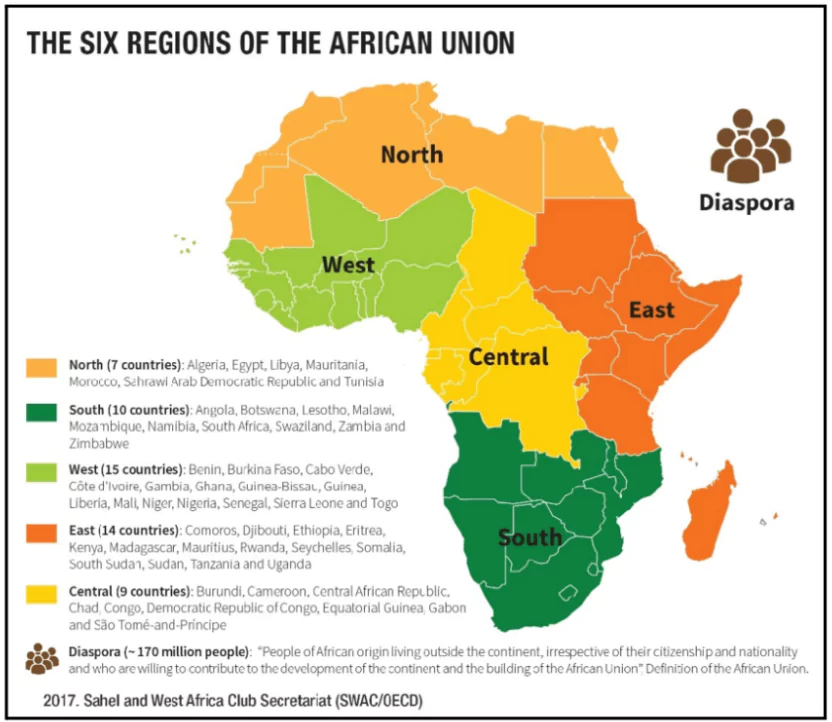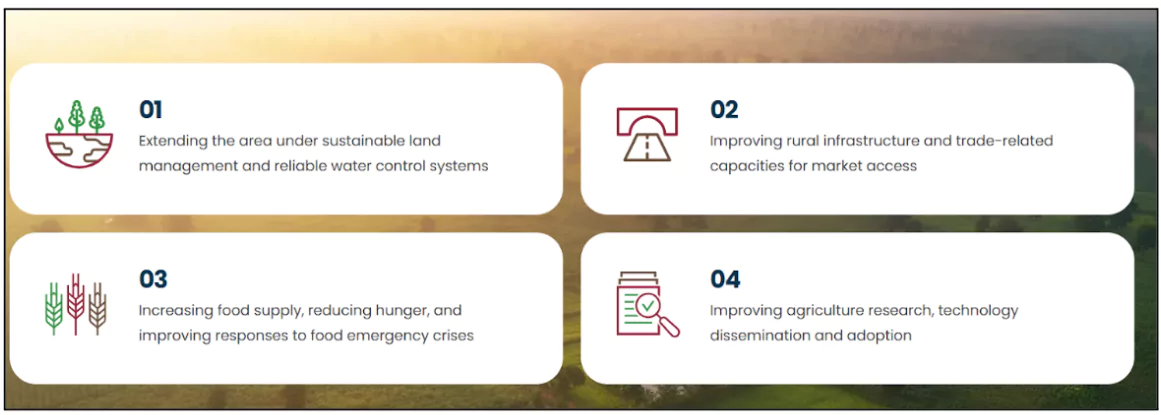African leaders adopted the Kampala Declaration for Africa’s agri-food systems transformation from 2026 to 2035 at the Extraordinary African Union Summit on the Comprehensive Africa Agriculture Development Program (CAADP) in Kampala, Uganda.
About African Union (AU)
- Formation: Established in 2002, succeeding the Organization of African Unity (OAU).
- Headquarters: Addis Ababa, Ethiopia.
- Members: 55 countries from the African continent.
- Agenda 2063: Agenda 2063 is the continent’s blueprint and master plan for transforming Africa into the global powerhouse of the future.
- It is the concrete manifestation of how the continent intends to achieve this goal within a 50-year period.
- The First Ten-Year Implementation Plan spanning from 2014 to 2023, outlines a set of goals, priority areas and targets that the continent aims to achieve at national, regional and continental levels.
|
Enroll now for UPSC Online Course
About Kampala Declaration
- Successor: The declaration succeeds the Malabo Declaration, whose implementation concludes in 2025.
- Focus: It emphasizes transformative agri-food systems to address Africa’s food security and agricultural challenges.
- Alignment: Integrates with Agenda 2063 (Africa’s development blueprint) and the Africa Common Position on Food Systems.
- Vision: Advocates for sustainable and resilient agri-food systems for a healthy and prosperous Africa.
- Approach: Introduces a shift from agriculture-led growth to an agri-food systems approach that considers the entire food value chain.
- Agri-food systems approach: FAO defines agri-food systems as all the interconnected activities and actors involved in getting food from field to fork.
- This broad definition encompasses everything from agricultural production and processing to distribution, consumption, and waste management.
- It also highlights the critical role of economic, social, and environmental factors in shaping how food reaches our plates.
- Roadmap: Provides a detailed framework with clear implementation and monitoring strategies.
Background of CAADP and Previous Declarations

- Comprehensive Africa Agriculture Development Program (CAADP):
- Launched in 2003 under the Maputo Declaration to eliminate hunger and reduce poverty through agriculture-led development.
- Aimed to achieve 10% budget allocation to agriculture and 6% annual agricultural productivity growth.
- Malabo Declaration (2014):
- Expanded CAADP to include goals such as eradicating hunger, tripling intra-African trade, and enhancing resilience.
- Despite efforts, the 2024 Biennial Review Report revealed Africa remains off-track in meeting key commitments like ending hunger by 2025.
CAADP Priority Areas

Persisting Challenges in Africa’s Agriculture Sector
- Food Security: According to FAO , Africa remains the region with the largest estimated proportion of the population facing hunger at 20.4 percent.
- Malnutrition: Despite progress in reducing stunting, malnutrition continues to hinder development and increase mortality rates.
- Rising obesity and related health issues add economic and health burdens.
- External Shocks: COVID-19 pandemic, conflicts, the Russia-Ukraine war, and climate change have disrupted agricultural systems.
Check Out UPSC Modules From PW Store
Way Forward
- Strategic Shift: The post-Malabo agenda (2026–2035) introduces an integrated agri-food systems approach addressing challenges across the entire food value chain.
- Prioritizes sustainability, resilience, and combatting malnutrition through diverse and nutritious diets.
- Climate-Smart Innovations: Focuses on adopting climate-smart technologies to close agricultural productivity gaps.
- Ensures food security for Africa’s projected 2.5 billion population by 2050.
- Resilience Building:Aims to strengthen the ability to adapt to and recover from shocks like climate change and pandemics.
- In 2023, only two African countries were on track for resilience-building targets.
- Leadership Commitment: Leaders from Kenya, Ethiopia, Angola, Burundi, and Somalia emphasized the importance of modernizing agriculture for food security and economic growth.
![]() 17 Jan 2025
17 Jan 2025



